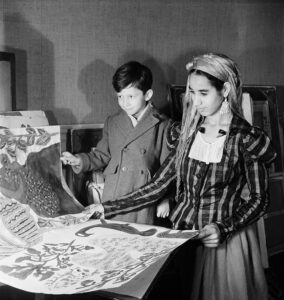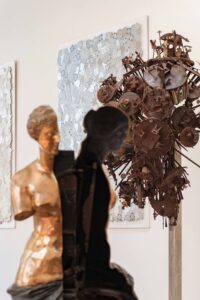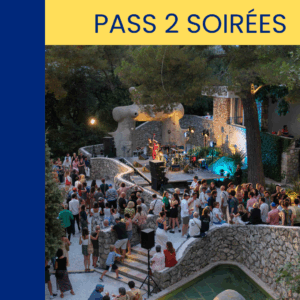
Figure (Walnut)
A sculpture of geometric and organic forms, in which the interplay between convex and concave forms (inherited from Mondrian) represents a constant opposition between empty and full. In search of a new aesthetic, Barbara Hepworth prioritised the language of volume and shape. The animal and the vegetable were also two major sources of inspiration for the poetry of volume developed by the artist.
Barbara Hepworth (1903-1975)
Sculptrice britannique, née à Wakefield dans le Yorkshire en 1903, Barbara Hepworth est une représentante majeure de la sculpture abstraite de la première moitié du XXe siècle. Elle a représenté le Royaume-Uni en 1950 à la Biennale de Venise avant de remporter le grand prix de la Biennale de Sao Paulo en 1959.
A British sculptor born in Wakefield, Yorkshire, in 1903, Barbara Hepworth was a key exponent of the abstract sculpture of the first half of the 20th century. She represented Great Britain at the 1950 Venice Biennale, before winning the Grand Prize at the São Paulo Biennale in 1959.
Close to the Abstraction-Création group in the 1930s, and the Salon des Réalités Nouvelles after the Second World War, in the interwar years she mixed with many figures living in Paris. Through her husband, the English painter Ben Nicholson (1894-1982), she became friends with Alexander Calder (1898-1976), Naum Gabo (1890-1977), Robert Delaunay (1885-1941), Piet Mondrian (1872-1944) and Theo Van Doesburg (1883-1931). But it was above all her meeting with Brancusi, and subsequently with Arp, that triggered in her an aesthetic revelation.



